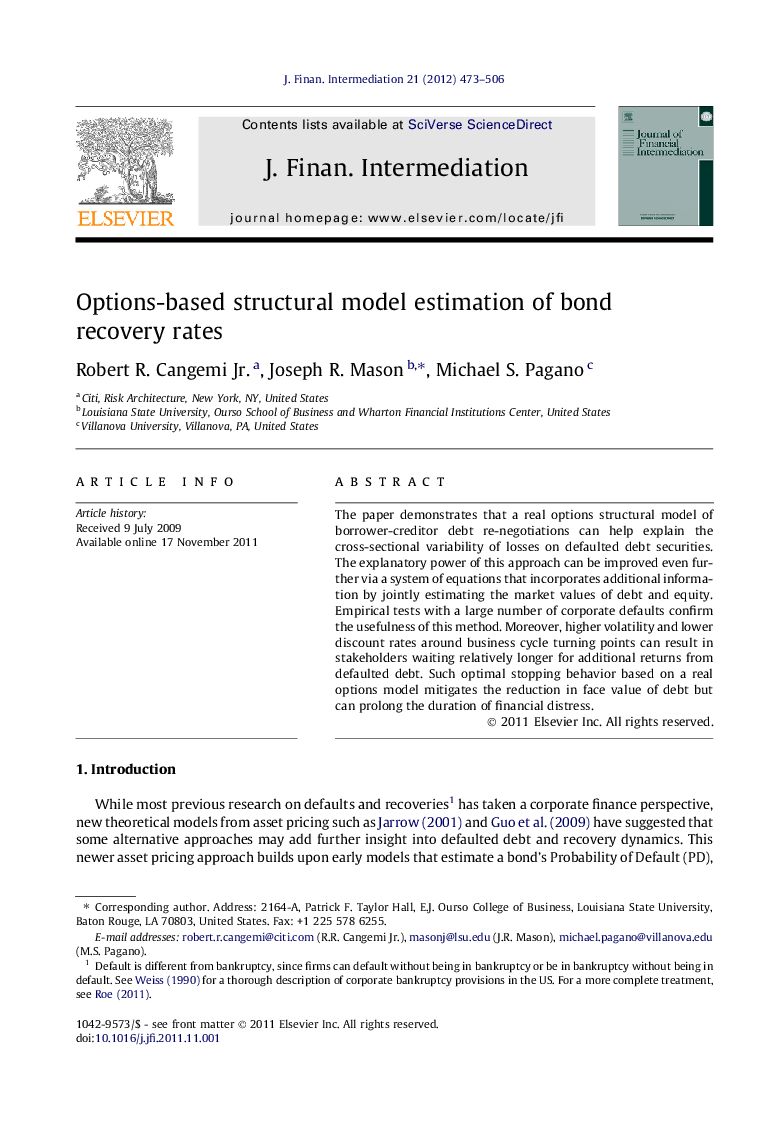| Article ID | Journal | Published Year | Pages | File Type |
|---|---|---|---|---|
| 960767 | Journal of Financial Intermediation | 2012 | 34 Pages |
Abstract
The paper demonstrates that a real options structural model of borrower-creditor debt re-negotiations can help explain the cross-sectional variability of losses on defaulted debt securities. The explanatory power of this approach can be improved even further via a system of equations that incorporates additional information by jointly estimating the market values of debt and equity. Empirical tests with a large number of corporate defaults confirm the usefulness of this method. Moreover, higher volatility and lower discount rates around business cycle turning points can result in stakeholders waiting relatively longer for additional returns from defaulted debt. Such optimal stopping behavior based on a real options model mitigates the reduction in face value of debt but can prolong the duration of financial distress.
Related Topics
Social Sciences and Humanities
Business, Management and Accounting
Strategy and Management
Authors
Robert R. Jr., Joseph R. Mason, Michael S. Pagano,
